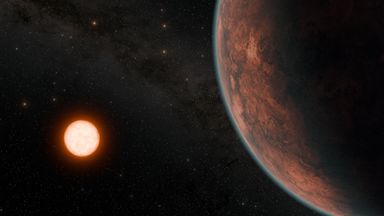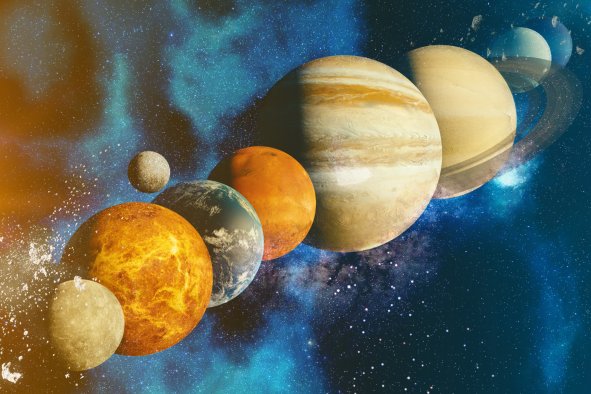Gargantuan black holes have been spotted firing powerful beams of supercharged particles that change direction slowly over millions of years
These supermassive black holes were spotted by NASA's Chandra X-ray Observatory and the U.S. National Science Foundation (NSF)'s National Radio Astronomical Observatory's (NRAO) Very Long Baseline Array as they spun around in different directions, sending these particle jets into deep space.
According to a new paper in The Astrophysical Journal, these jets—fired out from each black hole in two opposite-facing streams—left cavities in clouds of gas.
Supermassive black holes are colossal black holes found at the centers of most galaxies, including our own Milky Way. They have masses ranging from millions to billions of times that of our sun and can produce narrow beams of particles that are ejected at nearly the speed of light and extend for thousands to millions of light-years from the black hole.
According to the paper, the direction of the jets fired out of 16 of these supermassive black holes could be elucidated by investigating pairs of bubbles in clouds of gas in space. These cavities in the gas would have been created by the force of the powerful particle beams, so they can tell astronomers the direction that the black holes' jets were facing at a given time.
The researchers found that many of the black holes in the study had changed the direction in which their jets were facing, some by up to 90 degrees.
"We found that about a third of the beams are now pointing in completely different directions than before," study co-author Francesco Ubertosi, a researcher at the University of Bologna in Italy, said in a statement. "These Death Star black holes are swiveling around and pointing at new targets, like the fictional space station in Star Wars."
This process takes between one and tens of millions of years, the researchers explained.
"Considering that these black holes are likely more than 10 billion years old, we consider a large change in direction over a few million years to be fast. Changing the direction of the giant black hole beams in about a million years is analogous to changing the direction of a new battleship in a few minutes," study co-author Gerrit Schellenberger, a researcher at the Harvard & Smithsonian Center for Astrophysics (CFA), said in the statement.
The researchers aren't entirely sure how the black holes are able to turn their beams to face different directions, as they were previously thought to align with the axis around which the black hole rotates. One suggestion is that material falling into the black hole at an angle not parallel to its disk may change the direction that this rotational axis faces.
"It's possible that material rapidly falling towards the black holes at a different angle for long enough would drag their rotation axes in a different direction, causing the beams to point in a different direction," co-author Jan Vrtilek, a researcher at CFA, said in the statement.
According to the paper, these beams and their impact on the rest of the galaxy may play an important role in star formation, as they pump energy into the clouds of gas.
By heating up these gas clouds, the beams prevent them from cooling down and forming stars, creating large areas of low star birth. If the beams change direction regularly, like they have been discovered to be able to do, then these dead zones may stretch much further.
"These galaxies are too distant to tell if the beams from the Death Star black holes are damaging stars and their planets, but we are confident they are preventing many stars and planets from forming in the first place," co-author Ewan O'Sullivan, also a researcher at CFA, said in the statement.
Do you have a tip on a science story that Newsweek should be covering? Do you have a question about supermassive black holes? Let us know via science@newsweek.com.
Disclaimer: The copyright of this article belongs to the original author. Reposting this article is solely for the purpose of information dissemination and does not constitute any investment advice. If there is any infringement, please contact us immediately. We will make corrections or deletions as necessary. Thank you.



